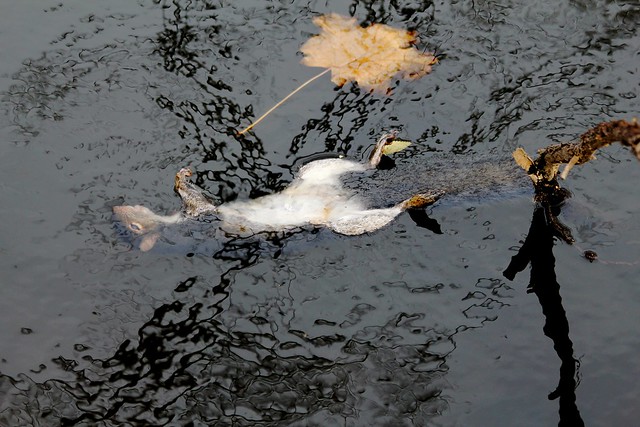
Photo: A dead gray squirrel after a juvenile hawk dropped it in the Mill Pond of Van Cortlandt Park
Here’s an article about an invasive species and the effects on a native species.
In this article, we see that the Gray Squirrel (Sciurus carolinensis), a creature we are all too familiar with, invading the domain of the Red Squirrel (Sciurus vulgaris). These two squirrels are highly related. As we can see, they fall within the same Genus. While the Grey Squirrel species adapted to the North American environment, the red squirrel adapted to Eurasia. Here, we see the effects of introducing an invasive (in the late 1800s) and the effect on a native species. Both squirrels share a similar diet and physical form that is specialized for a very similar environment. So why are the Grays of North America out-competing the Reds? The article points to the resistance of the Grays to pox viruses.Some time in history, resistance to pox viruses was a selective pressure. Those who carried the resistance trait lived and propagated this feature. Now, it is a further advantage when competing with the native Red Squirrel species.
Where else have we seen something like this historically even within the same species? Think about the Columbian Exchange and how that reshaped the booming population of the world at that time.



